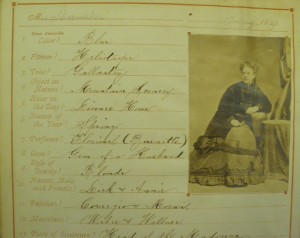An online fad became a journalistic obsession with a late-winter craze known as “25 Random Things.” Members of the social networking site Facebook began crafting lists about themselves: personal histories, likes, and dislikes — self-identified quirks describable in a sentence they then displayed for others to see.
The only thing that seemed to equal the number of posters was the number of critics, often appearing with newspaper bylines. Eager to explore, criticize, and then predictably offer their own personal list, one judgment was clear: “narcissism,” even going as far as “tedious mass solipsism.” In trying to comb the depths of “25 Things,” one journalist tunneled into the past:
Despite how it might feel to those who have suddenly been bombarded with these lists, the meme itself did not come out of nowhere. To the contrary, viral e-mail messages designed to help friends discover unusual facts about one another are as old as e-mail itself (Douglas Quenqua, “Ah, Yes, More about Me? Here are ‘25 Random Things,’” New York Times, February 5, 2009).
Is that as far back as we can go? The present rarely surprises history. I take your “email itself” and raise you a century.
Slipped deep in the AAS shelves are two books, the first published in 1869 sits a few feet away from its 2nd edition progeny. Their catalog entries are minimal with only two subject headings: 1) Amusements 2) Psychological recreations. But within their covers, one finds a gentle reminder of our shared impulses, our timeless fascination with our own individuality, and our interest in defining ourselves and comparing the results with those of our peers. Mental Photographs: An Album for Confessions of Tastes, Habits, and Convictions offered forty prompts to be filled out among friends. The questions seem innocuous now, and of a decidedly Victorian slant: favorite season, favorite character in romance, favorite tree, etc. But Mental Photographs offers an interesting glance into American tastes, sensibilities, and humor in the years following the Civil War and suggests its usefulness for a number of different research questions. Answers to prompts such as “the trait of character you most admire” in man and woman, offer insights into perceptions of gender. Questions relating to favorite poets, prose authors, and books inspired humor, “pocket-book—if filled,” but also reveal tastes of the day, with responses like Longfellow, Dickens, Tennyson, and Thackeray.

Now, as then, this shared framework coaxed participants to reveal something about themselves. Notably in our image-laden world, “25 Things” occurred as simple black and white text; sparse, especially on a site named “Facebook.” The respondents to Mental Photographs had the option to affix a carte-de-visite portrait alongside their answers; only one in the AAS copies chose to do so. Perhaps in their own image-laden world (the inexpensive 2 1/8” x 3 ½” cards sold in the millions during the second half of the nineteenth century), they embraced the opportunity to gather together and draw themselves beyond the limitations of the camera lens. We are left with a unique and endearing snapshot of thirty-five individuals who stand out both in their differences to us and their remarkable similarities.
In keeping with the fashion, please visit the AAS Facebook page to see our own list of “25 things” you may not know about the American Antiquarian Society.



“Rings and other jewels are not gifts, but apologies for gifts. The only gift is a portion of thyself.”
Ralph Waldo Emerson quoted in Cindy Dickinson’s “Creating a World of Books, Friends, and Flowers: Gift Books and Inscriptions, 1825-1860.”
Perhaps we should be criticizing not the narcissistic tendencies present in the Facebook world but its failure to engage in the nineteenth-century reciprocal individuality of its antecedents! Nice work, Diann!